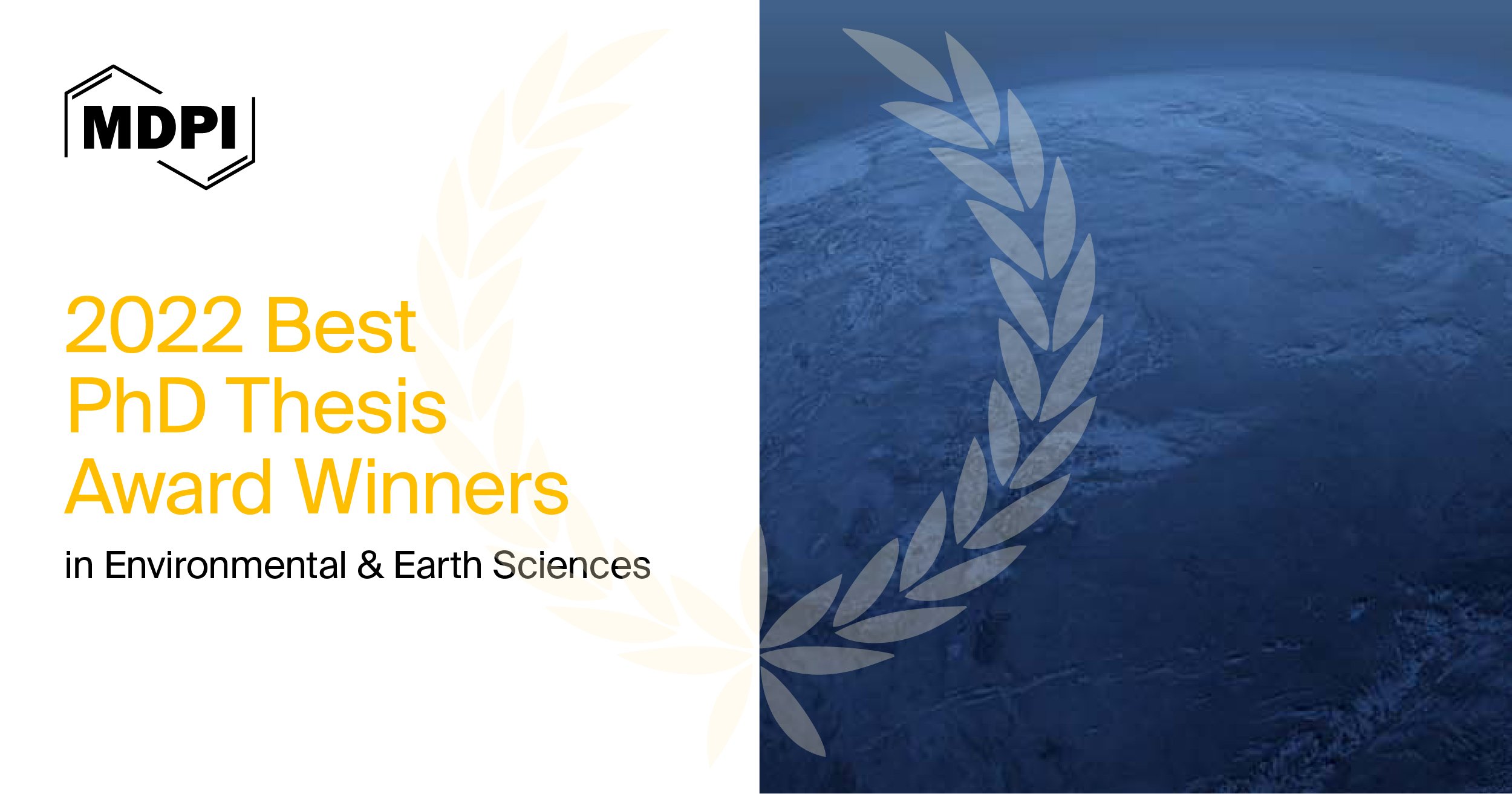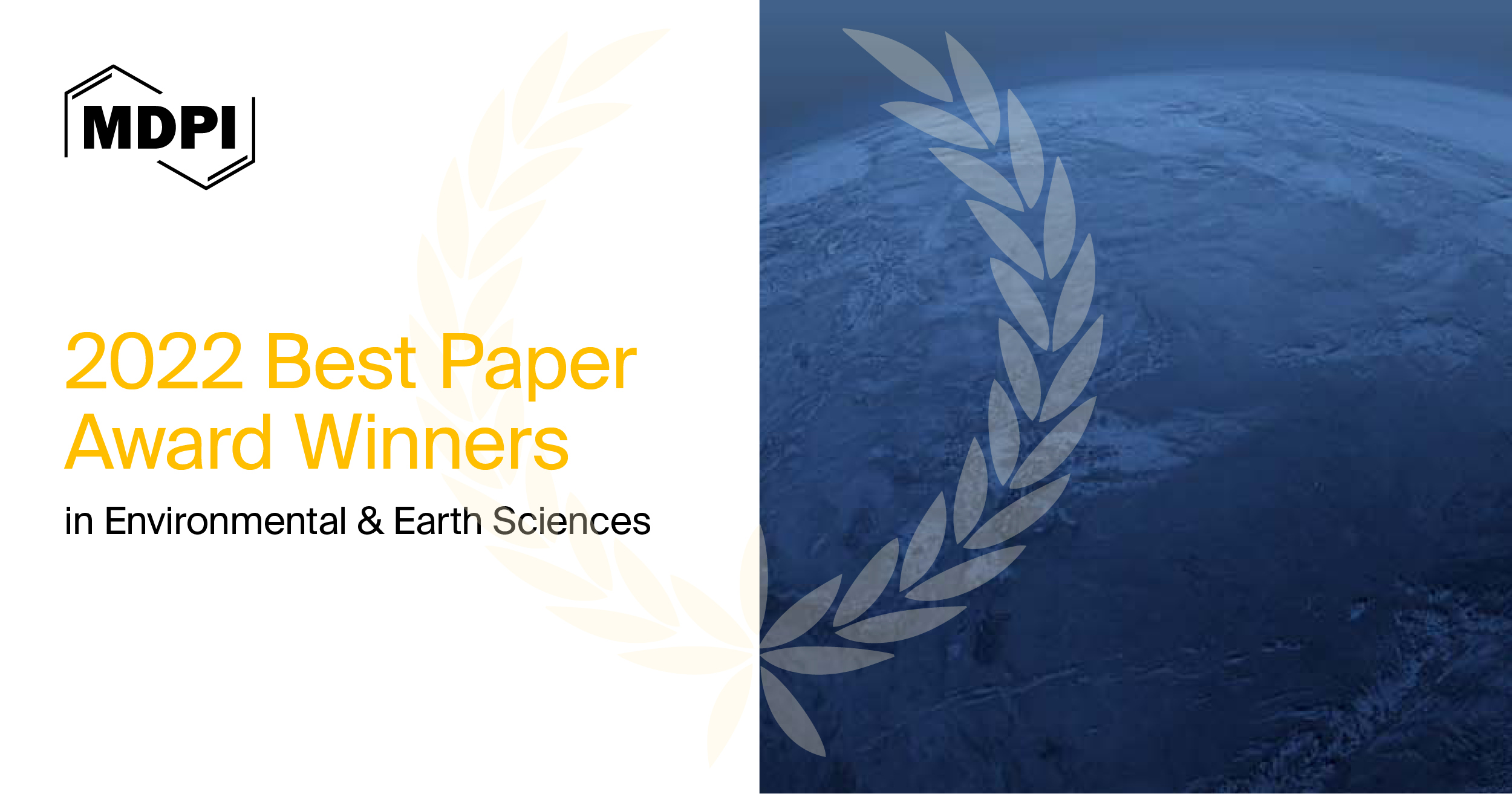-
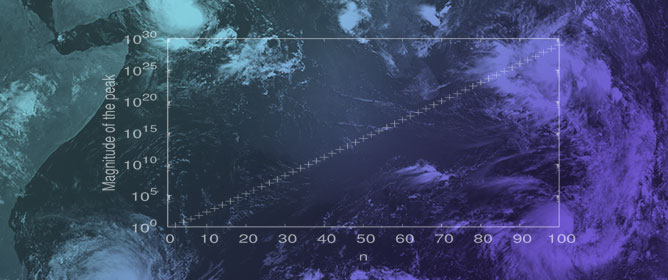 A Butterfly Effect without Chaos
A Butterfly Effect without Chaos -
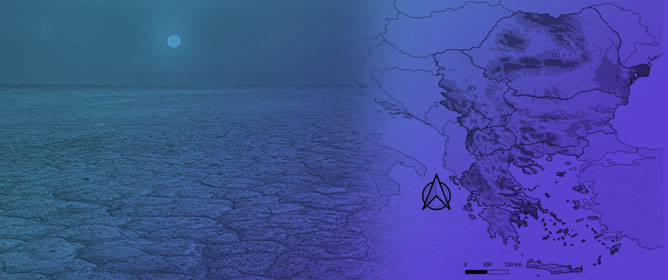 Projecting Bioclimatic Change over the South-Eastern European Agricultural and Natural Areas via Ultrahigh-Resolution Analysis of the de Martonne Index
Projecting Bioclimatic Change over the South-Eastern European Agricultural and Natural Areas via Ultrahigh-Resolution Analysis of the de Martonne Index -
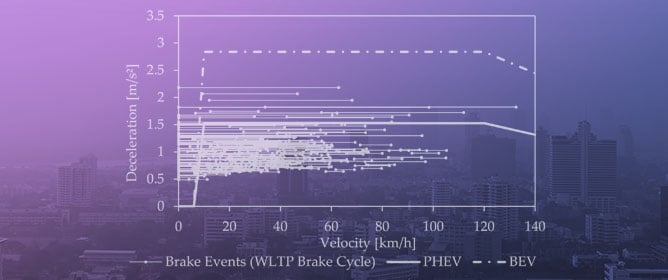 Comprehensive Analysis of Current Primary Measures to Mitigate Brake Wear Particle Emissions from Light-Duty Vehicles
Comprehensive Analysis of Current Primary Measures to Mitigate Brake Wear Particle Emissions from Light-Duty Vehicles -
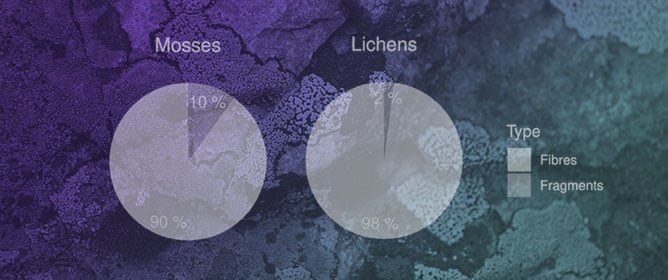 Biomonitors of Airborne Microplastics
Biomonitors of Airborne Microplastics -
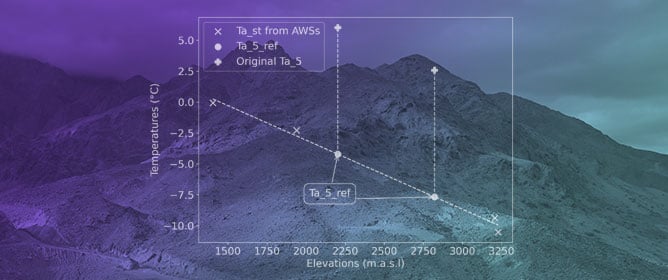 Machine-Learning-Based Downscaling of Hourly ERA5-Land Air Temperature over Mountainous Regions
Machine-Learning-Based Downscaling of Hourly ERA5-Land Air Temperature over Mountainous Regions
Journal Description
Atmosphere
Atmosphere
is an international, peer-reviewed, open access journal of scientific studies related to the atmosphere published monthly online by MDPI. The Italian Aerosol Society (IAS) and Working Group of Air Quality in European Citizen Science Association (ECSA) are affiliated with Atmosphere and their members receive a discount on the article processing charges.
- Open Access— free for readers, with article processing charges (APC) paid by authors or their institutions.
- High Visibility: indexed within Scopus, SCIE (Web of Science), Ei Compendex, GEOBASE, GeoRef, Inspec, CAPlus / SciFinder, Astrophysics Data System, and other databases.
- Journal Rank: CiteScore - Q2 (Environmental Science (miscellaneous))
- Rapid Publication: manuscripts are peer-reviewed and a first decision is provided to authors approximately 16.3 days after submission; acceptance to publication is undertaken in 2.8 days (median values for papers published in this journal in the first half of 2023).
- Recognition of Reviewers: reviewers who provide timely, thorough peer-review reports receive vouchers entitling them to a discount on the APC of their next publication in any MDPI journal, in appreciation of the work done.
- Testimonials: See what our editors and authors say about the Atmosphere.
- Companion journal: Meteorology.
Impact Factor:
2.9 (2022);
5-Year Impact Factor:
3.0 (2022)
Latest Articles
Evaluation of an Automatic Meteorological Drone Based on a 6-Month Measurement Campaign
Atmosphere 2023, 14(9), 1382; https://doi.org/10.3390/atmos14091382 (registering DOI) - 31 Aug 2023
Abstract
From December 2021 to May 2022, MeteoSwiss and Meteomatics conducted a proof of concept to demonstrate the capability of automatic drones to provide data of sufficient quality and reliability on a routine operational basis. Over 6 months, Meteodrones MM-670 were operated automatically eight
[...] Read more.
From December 2021 to May 2022, MeteoSwiss and Meteomatics conducted a proof of concept to demonstrate the capability of automatic drones to provide data of sufficient quality and reliability on a routine operational basis. Over 6 months, Meteodrones MM-670 were operated automatically eight times per night at Payerne, Switzerland. In total, 864 meteorological profiles were measured and compared to co-located standard measurements, including radiosoundings and remote sensing instruments. To our knowledge, this is the first time that Meteodrone’s atmospheric profiles have been evaluated in such an extensive campaign. The paper highlights two case studies that showcase the performance and challenges of measuring temperature, humidity, and wind with a Meteodrone. It also focuses on the overall quality of the drone measurements. Throughout the campaign, the availability of Meteodrone measurements was 75.7%, with 82.2% of the flights reaching the nominal altitude of 2000 m above sea level. The quality of the measurements was assessed against the WMO’s (World Meteorological Organization) requirements. The temperature measurements gathered by the Meteodrone met the “breakthrough” target, while the humidity and wind profiles met the “threshold” target for high-resolution numerical weather prediction. The temperature measurement quality was comparable to that of a microwave radiometer, and the humidity quality was similar to that obtained from a Raman LiDAR. However, the wind measurements gathered by a Doppler LiDAR were more accurate than the estimation provided by the Meteodrone. This campaign marks a significant step towards the operational use of automatic drones for meteorological applications.
Full article
(This article belongs to the Special Issue Unmanned Aerial Systems for Investigating the Troposphere: Developments and Applications)
Open AccessArticle
A Comparative Investigation of Light Scattering and Digital Holographic Imaging to Measure Liquid Phase Cloud Droplets
Atmosphere 2023, 14(9), 1381; https://doi.org/10.3390/atmos14091381 (registering DOI) - 31 Aug 2023
Abstract
The measurement of cloud microphysical parameters plays an important role in describing characteristics of liquid phase clouds and investigating mutual relationships between clouds and precipitation. In this paper, cloud microphysical parameters at Liupan Mountain Weather Station in Ningxia are measured with a high-resolution
[...] Read more.
The measurement of cloud microphysical parameters plays an important role in describing characteristics of liquid phase clouds and investigating mutual relationships between clouds and precipitation. In this paper, cloud microphysical parameters at Liupan Mountain Weather Station in Ningxia are measured with a high-resolution coaxial digital holographic imager and a fog monitor 120. There are differences in the measurement results between the two instruments. The number concentration measured by the digital holographic imager is about 1.5 times that of the fog monitor 120. However, their Pearson correlation coefficient is above 0.9. Through analysis, we found that the measurement results of the digital holographic imager and fog monitor 120 are differences in 2–4 µm and 7–50µm. For the droplets with the diameters of 4–7 µm, their measurement results have good consistency. By analyzing the influence of wind field and detection sensitivity on the measurement principle, the reasons which caused the difference are proposed. Advice is given to observe topographic clouds by using the above two instruments. In addition, the differences in liquid water content and visibility are analyzed due to the absence of small and large droplets. The study provides data support for improving the accuracy of instruments in measuring cloud droplets and is useful for research in the field of cloud microphysical processes.
Full article
(This article belongs to the Special Issue Microphysics of Cloud Processes (MCP))
Open AccessArticle
South American Monsoon Lifecycle Projected by Statistical Downscaling with CMIP6-GCMs
by
, , , and
Atmosphere 2023, 14(9), 1380; https://doi.org/10.3390/atmos14091380 (registering DOI) - 31 Aug 2023
Abstract
This study analyzed the main features (onset, demise, and length) of the South American Monsoon System (SAMS) projected in different time slices (2020–2039, 2040–2059, 2060–2079, and 2080–2099) and climate scenarios (SSP2–4.5 and SSP5–8.5). Eight global climate models (GCMs) from the Coupled Model Intercomparison
[...] Read more.
This study analyzed the main features (onset, demise, and length) of the South American Monsoon System (SAMS) projected in different time slices (2020–2039, 2040–2059, 2060–2079, and 2080–2099) and climate scenarios (SSP2–4.5 and SSP5–8.5). Eight global climate models (GCMs) from the Coupled Model Intercomparison Project Phase 6 (CMIP6) that perform well in representing South America’s historical climate (1995–2014) were initially selected. Thus, the bias correction–statistical downscaling (BCSD) technique, using quantile delta mapping (QDM), was applied in each model to obtain higher-resolution projections than their original grid. The horizontal resolution adopted was 0.5° of latitude × longitude, the same as the Climate Prediction Center precipitation analysis used as a reference dataset in BCSD. The QDM technique improved the monsoon onset west of 60° W and the simulated demise and length in southwestern Amazonia. Raw and BCSD ensembles project an onset delay of approximately three pentads compared to the historical period over almost all regions and a demise delay of two pentads northward 20° S. Additionally, the BCSD ensemble projects a reduced length with statistical significance in most South Atlantic Convergence Zone regions and a delay of three pentads in the demise over the Brazilian Amazon from the second half of the 21st century.
Full article
(This article belongs to the Section Meteorology)
►▼
Show Figures
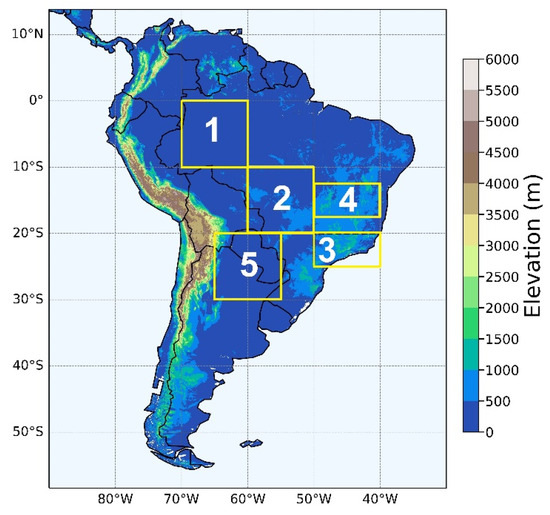
Figure 1
Open AccessArticle
3-D Ionospheric Electron Density Variations During the 2017 Great American Solar Eclipse: A Revisit
Atmosphere 2023, 14(9), 1379; https://doi.org/10.3390/atmos14091379 (registering DOI) - 31 Aug 2023
Abstract
This paper studies the three-dimensional (3-D) ionospheric electron density variation over the continental US and adjacent regions during the August 2017 Great American Solar Eclipse event, using Millstone Hill incoherent scatter radar observations, ionosonde data, the Swarm satellite measurements, and a new TEC-based
[...] Read more.
This paper studies the three-dimensional (3-D) ionospheric electron density variation over the continental US and adjacent regions during the August 2017 Great American Solar Eclipse event, using Millstone Hill incoherent scatter radar observations, ionosonde data, the Swarm satellite measurements, and a new TEC-based ionospheric data assimilation system (TIDAS). The TIDAS data assimilation system can reconstruct a 3-D electron density distribution over continental US and adjacent regions, with a spatial–temporal resolution of 1
(This article belongs to the Special Issue Feature Papers in Upper Atmosphere)
Open AccessArticle
Evaluation of MERRA-2 Black Carbon Characteristics and Potential Sources over China
Atmosphere 2023, 14(9), 1378; https://doi.org/10.3390/atmos14091378 (registering DOI) - 31 Aug 2023
Abstract
Black carbon (BC), an important component of atmospheric aerosol, plays a significant role in regional climate, hydrological cycle, variation of monsoon rainfall, and human health. The 40-year detailed atmospheric BC over China from 1981 to 2020 is systematically investigated through the MERRA-2 reanalysis
[...] Read more.
Black carbon (BC), an important component of atmospheric aerosol, plays a significant role in regional climate, hydrological cycle, variation of monsoon rainfall, and human health. The 40-year detailed atmospheric BC over China from 1981 to 2020 is systematically investigated through the MERRA-2 reanalysis dataset. MERRA-2 BC generally showed a good correlation (R = 0.68) compared with 673 monthly samples from ground-based observation at 35 stations around China. The overall annual average of MERRA-2 BC concentration over China is 1.15 μg/m3, with a fast growth rate during 1981–2007 and a relatively slow decrease after that. The winter season has the highest mean concentration of BC, followed by autumn and spring, whereas summer shows relatively weaker values. The order of annual average BC concentrations during 1981–2020 is Beijing-Tianjin-Hebei region (BTH, 4.02 μg/m3) > Sichuan Basin (SB, 3.94 μg/m3) > Yangtze River Delta (YRD, 2.68 μg/m3) > Pearl River Delta (PRD, 1.47 μg/m3). The monthly mean BC concentrations over the BTH, YRD, PRD and SB are estimated to be smallest 3.18 μg/m3 in May, 1.94 μg/m3 in August, 0.82 μg/m3 in July, 3.04 μg/m3 in June, respectively, whilst largest consistently in December with 5.09 μg/m3, 3.83 μg/m3, 2.12 μg/m3, and 5.41 μg/m3, respectively. Our study indicates the primary potential source areas for BC are concentrated in the research city and its surroundings. Beijing and Chengdu are more BC-polluted areas than Shanghai and Guangzhou. Long-distance, regional transfer from south BTH contributes importantly to BC pollution in Beijing under the influence of prevailing southerly winds. The geographical location of Chengdu causes the transport and accumulation of BC inside the SB.
Full article
(This article belongs to the Section Aerosols)
►▼
Show Figures
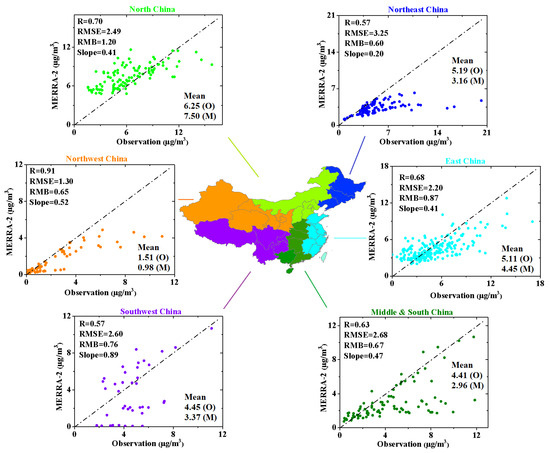
Figure 1
Open AccessArticle
Impact of ICME- and SIR/CIR-Driven Geomagnetic Storms on the Ionosphere over Hungary
Atmosphere 2023, 14(9), 1377; https://doi.org/10.3390/atmos14091377 - 31 Aug 2023
Abstract
We investigate the differences between the effects of geomagnetic storms due to Interplanetary Coronal Mass Ejections (ICME) and due to Stream Interaction Regions or Corotating Interaction Regions (SIR/CIR) on the ionospheric F2-layer during the maximum of solar cycle 24. We have created a
[...] Read more.
We investigate the differences between the effects of geomagnetic storms due to Interplanetary Coronal Mass Ejections (ICME) and due to Stream Interaction Regions or Corotating Interaction Regions (SIR/CIR) on the ionospheric F2-layer during the maximum of solar cycle 24. We have created a unique list of the ICME- and SIR/CIR-driven geomagnetic storm events for the time interval between November 2012 and October 2014. Finally, 42 clear ICME and 34 clear SIR/CIR events were selected for this analysis. The individual geomagnetic storm periods were grouped by seasons, time of day, and local time of Dstmin and were analyzed using three different methods: linear correlation analysis using 4-hour averages of foF2 parameters and the geomagnetic indices (1st), daily variation of deltafoF2 (2nd), and 3D plotting: geomagnetic indices vs. time vs. deltafoF2 (3rd). The main phase day of the ICME- and SIR/CIR-induced geomagnetic storms was our main focus. We used manually evaluated ionospheric foF2 parameters measured at the Sopron ionosonde station and the geomagnetic indices (Kp, Dst, and AE) for this analysis. We have found that in most cases, the variation of the Dst index is the best indicator of the impact caused in the F2 layer. We conclude as well that the representation of the data by the third method gives a better description of the ICME and SIR/CIR-triggered storm behavior. In addition, our investigation shows that the SIR/CIR-related perturbations can be predicted with greater accuracy with the second method.
Full article
(This article belongs to the Special Issue Recent Advances in Ionosphere Observation and Investigation)
Open AccessArticle
Simulations of a Heavy Snowfall Event in Xinjiang via the WRF Model Coupled with Different Land Surface Parameterization Schemes
Atmosphere 2023, 14(9), 1376; https://doi.org/10.3390/atmos14091376 (registering DOI) - 31 Aug 2023
Abstract
Frequent heavy snowfall in Xinjiang plays an important role in the land water cycle. In this study, 18 groups of simulation experiments are conducted on the heavy snowfall event in Xinjiang during 9–13 December of 2015 using the Weather Research and Forecasting (WRF)
[...] Read more.
Frequent heavy snowfall in Xinjiang plays an important role in the land water cycle. In this study, 18 groups of simulation experiments are conducted on the heavy snowfall event in Xinjiang during 9–13 December of 2015 using the Weather Research and Forecasting (WRF) model. In these experiments, the combination of six land surface parameterization schemes (the Noah scheme, Noah-MP scheme, RUC scheme, CLM4 scheme, PX scheme, and TD scheme) with three microphysical parameterization schemes (the WSM6 scheme, Thompson scheme, and Lin scheme) are adopted, where the observed snowfall data are used for performance evaluation. Results show that the simulated snowfall intensity and snowfall range in different areas are very sensitive to the selection of the land surface scheme. The snowfall in southern Xinjiang is overestimated by almost all six schemes, where the Noah-MP scheme performs more reasonably than the others. The Noah scheme shows its advantage in northwestern Xinjiang. The three different microphysical schemes vary significantly in producing snowfall amount. The WSM6 scheme produced the largest snowfall amount, and the Lin scheme resulted in the smallest snowfall amount. In addition, the accumulated snowfall amounts above 10 mm are generally underestimated by all six land surface schemes, while the accumulated snowfall amounts below 10 mm are overestimated by most of the schemes. The Noah-MP scheme performs the best in the simulation of the snowfall amount in the whole region. However, the Noah scheme shows an advantage in areas with a large snowfall amount.
Full article
(This article belongs to the Special Issue Effects of Natural and Anthropogenic Factors on Climate and Environment (2nd Edition))
►▼
Show Figures
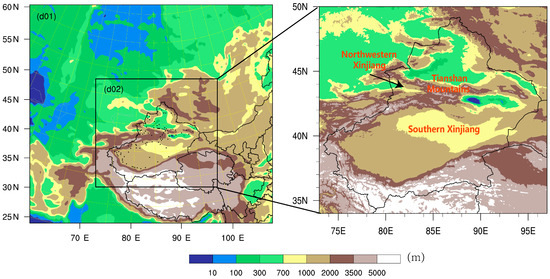
Figure 1
Open AccessArticle
Intermittency Scaling for Mixing and Dissipation in Rotating Stratified Turbulence at the Edge of Instability
Atmosphere 2023, 14(9), 1375; https://doi.org/10.3390/atmos14091375 - 31 Aug 2023
Abstract
Many issues pioneered by Jackson Herring deal with how nonlinear interactions shape atmospheric dynamics. In this context, we analyze new direct numerical simulations of rotating stratified flows with a large-scale forcing, which is either random or quasi-geostrophic (QG). Runs were performed at a
[...] Read more.
Many issues pioneered by Jackson Herring deal with how nonlinear interactions shape atmospheric dynamics. In this context, we analyze new direct numerical simulations of rotating stratified flows with a large-scale forcing, which is either random or quasi-geostrophic (QG). Runs were performed at a moderate Reynolds number
(This article belongs to the Special Issue Turbulence from Earth to Planets, Stars and Galaxies—Commemorative Issue Dedicated to the Memory of Jackson Rea Herring)
►▼
Show Figures
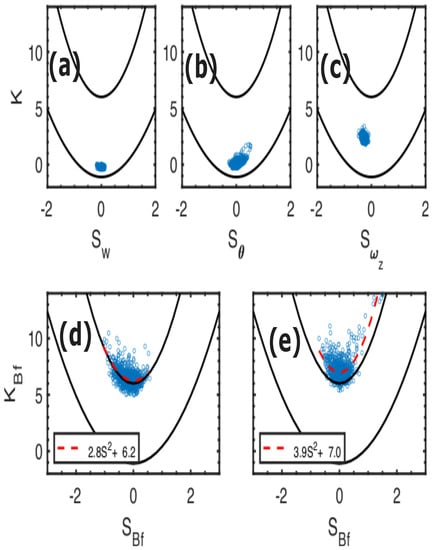
Figure 1
Open AccessArticle
Laser Beam Quality of Airy Beam in the Jet Engine Exhaust Induced Turbulence
by
and
Atmosphere 2023, 14(9), 1374; https://doi.org/10.3390/atmos14091374 - 31 Aug 2023
Abstract
Theoretical predictions of laser beam interactions with jet-engine-exhaust-induced turbulence are of importance for optimization of various optical systems, including LIDARs and airborne laser measurement systems. This paper is based on the extended Huygens–Fresnel diffraction integral and the Wigner distribution function, combined with the
[...] Read more.
Theoretical predictions of laser beam interactions with jet-engine-exhaust-induced turbulence are of importance for optimization of various optical systems, including LIDARs and airborne laser measurement systems. This paper is based on the extended Huygens–Fresnel diffraction integral and the Wigner distribution function, combined with the recently proposed power spectral density function of atmospheric turbulence induced by jet engine exhaust, to derive the formula for the quality factor of a partially coherent Airy beam in turbulent media induced by jet engine exhaust. Numerical calculations based on the analytical formula show that the smaller the structure constant and outer scale of the atmospheric turbulence induced by jet engine exhaust, the smaller the quality factor of a partially coherent Airy beam, indicating better laser beam quality. At the same time, the larger the generalized parameter and inner scale of the jet-engine-exhaust-induced turbulence and the longer the wavelength of the laser beam, the smaller the corresponding quality factor. The numerical results also show that reducing the coherence length of a partially coherent Airy beam and increasing its characteristic width are beneficial for reducing the quality factor in the atmospheric turbulence induced by jet engines. However, the numerical results show that increasing the coherence length of a partially coherent Airy beam and reducing its characteristic width are beneficial for reducing the quality factor in vacuum. This situation demonstrates significant differences between the interaction mechanisms of an Airy beam in vacuum and in the jet-engine-exhaust-induced turbulence. The results of our discussion contribute to clarifying the mechanism of interaction between an Airy laser beam and random media, as well as the application of a curved Airy laser beam in practical situations.
Full article
(This article belongs to the Section Air Quality)
►▼
Show Figures
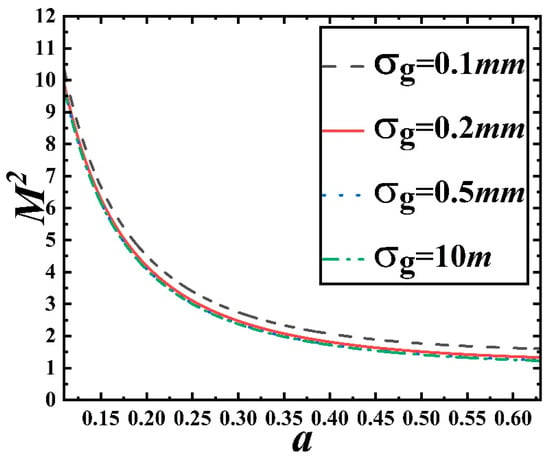
Figure 1
Open AccessArticle
Assessments for the Effect of Mineral Dust on the Spring Heat Waves in the Sahel
by
, , , , and
Atmosphere 2023, 14(9), 1373; https://doi.org/10.3390/atmos14091373 - 31 Aug 2023
Abstract
The physical mechanisms associated with heat waves (HWs) are well known in the midlatitudes but still under-documented in the Sahel. Specifically, the role of anthropogenic and natural changes in tropospheric aerosols regarding HWs remains an issue to address. Our study focuses on the
[...] Read more.
The physical mechanisms associated with heat waves (HWs) are well known in the midlatitudes but still under-documented in the Sahel. Specifically, the role of anthropogenic and natural changes in tropospheric aerosols regarding HWs remains an issue to address. Our study focuses on the characterisation of the dusty HWs in the Sahel, which generally occur from March to June. The goal is to reinforce or invalidate the assumption proposed in previous studies recently carried out in southern Europe and according to which mineral dust may locally change irradiance at the surface, thus atmospheric temperatures at 2 m, intensifying the HW. The work is carried out in three steps: (i) detect and describe the HW over the 2003–2014 period based on maximum daily 2-m temperatures (T
(This article belongs to the Section Biometeorology)
►▼
Show Figures
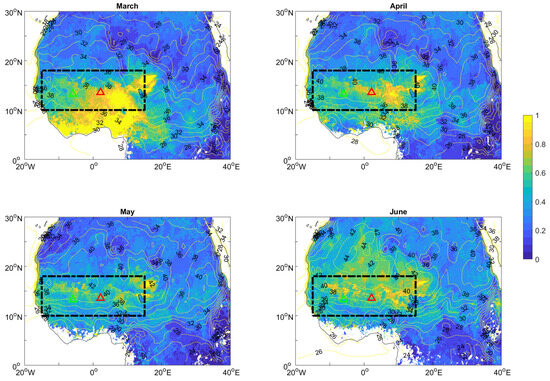
Figure 1
Open AccessArticle
Characteristic Analysis of the 10–30-Day Intraseasonal Oscillation over Mid-High-Latitude Eurasia in Boreal Summer
by
and
Atmosphere 2023, 14(9), 1372; https://doi.org/10.3390/atmos14091372 - 30 Aug 2023
Abstract
The aim of this study is to investigate the characteristics of the intraseasonal oscillation (ISO) with a 10–30-day cycle over mid-high-latitude Eurasia during boreal summer. The leading mode of this ISO is determined using an extended empirical orthogonal function analysis. Through a phase
[...] Read more.
The aim of this study is to investigate the characteristics of the intraseasonal oscillation (ISO) with a 10–30-day cycle over mid-high-latitude Eurasia during boreal summer. The leading mode of this ISO is determined using an extended empirical orthogonal function analysis. Through a phase composite analysis, it is observed that a southeastward-propagating wave train with a quasi-barotropic structure is present in Eurasia. The dynamical mechanism and energy conversion affecting its propagation are also analyzed. The negative (positive) temperature tendency appears in the southeastern part of the temperature anomaly in the lower troposphere (upper troposphere), resulting in further southeastward displacement of the temperature perturbation. A diagnosis of temperature tendency shows that the main cause of the southeastward movement is the advection of anomalous temperature by the mean zonal wind. The energy conversion analysis reveals that by converting kinetic energy and potential energy, the ISO perturbation acquires energy from the summertime mean flow during its southeastward movement.
Full article
(This article belongs to the Section Meteorology)
►▼
Show Figures
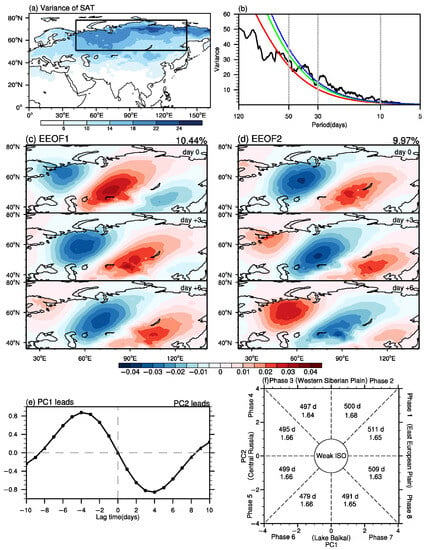
Figure 1
Open AccessArticle
Numerical Simulation Calculation of Thermal Discharge Water Diffusion in Coastal Nuclear Power Plants
Atmosphere 2023, 14(9), 1371; https://doi.org/10.3390/atmos14091371 - 30 Aug 2023
Abstract
Coastal areas have become the primary location for nuclear power plant sites due to the convenience of seawater cooling. In China, the diffusion range of thermal discharge water has always been a hot research topic as the basis for sea use areas. The
[...] Read more.
Coastal areas have become the primary location for nuclear power plant sites due to the convenience of seawater cooling. In China, the diffusion range of thermal discharge water has always been a hot research topic as the basis for sea use areas. The main physical process of heat loss in the numerical simulation of thermal discharge from power plants is heat exchange between the water surface and air. Currently, the methods for calculating this heat loss include the heat flux method and the water surface heat exchange coefficient method. Taking a power plant in Zhejiang as the research object, the MIKE 3 temperature–salinity module (heat flux method) and MIKE ECO Model (water surface heat exchange coefficient method) were used for modeling, and the diffusion of thermal discharge water under different modules was compared and analyzed. The results show that the calculated area of the water temperature rise envelope between the two modules differed significantly under the same conditions. The surface 4 °C temperature rise area, as calculated using ECO Model, was 45.8% smaller than that of the temperature–salinity module. The MIKE 3 temperature–salinity module can simulate the heat accumulation of water under thermal buoyancy, producing a significant thermal stratification phenomenon; the ECO module does not accurately represent the heat exchange process between the water surface and the air, and it does not adequately capture the significant vertical stratification that occurs in real-world scenarios. On this basis, this study not only lays a foundation for further exploring the impact of thermal discharge water from this powerhouse on the structure of surrounding marine biological communities and dissolved oxygen content in water bodies but also provides scientific evidence for the selection of modules when simulating thermal discharge water with the MIKE model.
Full article
(This article belongs to the Section Atmospheric Techniques, Instruments, and Modeling)
►▼
Show Figures
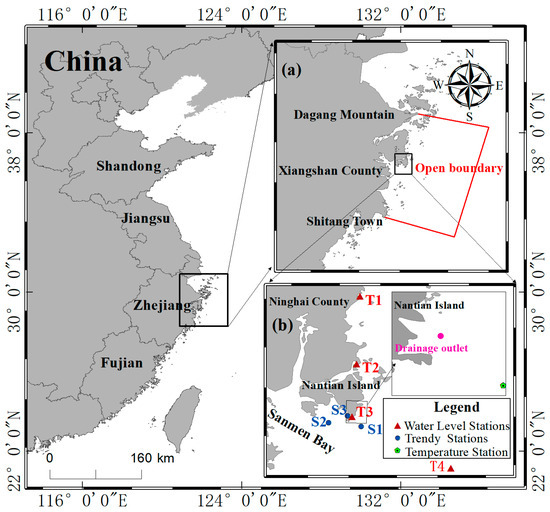
Figure 1
Open AccessReview
Estimation of Carbon Stocks and Carbon Sequestration Rates in Abandoned Agricultural Soils of Northwest Russia
Atmosphere 2023, 14(9), 1370; https://doi.org/10.3390/atmos14091370 - 30 Aug 2023
Abstract
The fallow agricultural soils of Northwest Russia represent an evolutionary model of the development of ecosystem components in time and space with multidirectional dynamics of agrogenic impact during the long history of agricultural land development. There has been both large-scale land development and
[...] Read more.
The fallow agricultural soils of Northwest Russia represent an evolutionary model of the development of ecosystem components in time and space with multidirectional dynamics of agrogenic impact during the long history of agricultural land development. There has been both large-scale land development and uncontrolled conversion of arable lands to a fallow state along with their removal in recent times. All this has led to the formation of a chrono-series of different-age soils with varying degrees of exposure of agrogenic factors. This paper presents a current review of the humus state of fallow soils in Northwest Russia, and examines the main factors (self-restoration, humus transformation, acidification) influencing the transformation of the soil cover under the process of post-agrogenesis. Effective farming techniques aimed at fixing carbon in soils as part of increasing the sequestration potential to mitigate the impact of climate change are considered. The ongoing process of the transition of lands into a fallow state could lead to organic carbon losses and changes in the main physical and chemical parameters, which negatively affects the self-restoration of fallow lands. We offer some recommendations for the effective rewetting of fallow lands in Northwest Russia with the purpose of carbon sequestration in the soil cover.
Full article
(This article belongs to the Special Issue Greenhouse Gas Emission: Sources, Monitoring and Control)
►▼
Show Figures
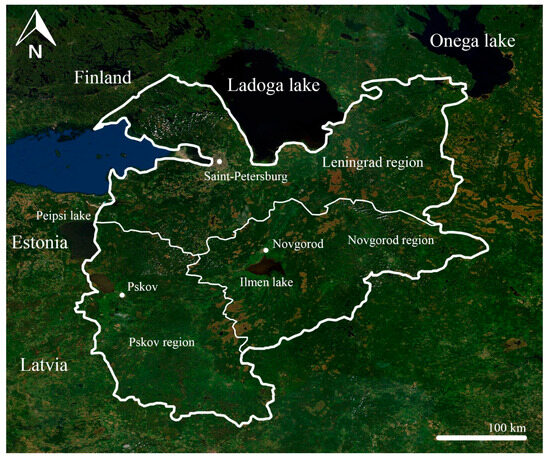
Figure 1
Open AccessArticle
Spatiotemporal Variation and Driving Factors for NO2 in Mid-Eastern China
Atmosphere 2023, 14(9), 1369; https://doi.org/10.3390/atmos14091369 - 30 Aug 2023
Abstract
Nitrogen dioxide (NO2) is one of the major air pollutants in cities across mid-eastern China. Comprehending the spatial and temporal dynamics of NO2 drivers in various urban areas is imperative for tailoring effective air control strategies. Using data from ground-based
[...] Read more.
Nitrogen dioxide (NO2) is one of the major air pollutants in cities across mid-eastern China. Comprehending the spatial and temporal dynamics of NO2 drivers in various urban areas is imperative for tailoring effective air control strategies. Using data from ground-based monitoring stations, we investigated the impact of socioeconomic and meteorological factors on NO2 concentrations in cities in mid-eastern China from 2015 to 2021 using the Geographically and Temporally Weighted Regression (GTWR) model. The findings reveal a notable reduction of over 10% in NO2 concentrations since 2015 in most cities, notably a 50.5% decrease in Bozhou. However, certain areas within Anhui and Jiangsu have experienced an increase in NO2 concentrations. Significant spatial heterogeneity is observed in the relationship between NO2 concentrations and influencing factors. The permanent population density (POP) and the electricity consumption (EC) of the entire society exhibited the strongest correlations with NO2 concentrations, with average coefficients of 0.431 and 0.520, respectively. Furthermore, other economic factors such as urbanization rate (UR), the share of secondary sector output in total GDP (IS), and the coverage rate of urban green areas (CG) were predominantly positively correlated, while GDP per capita (PGDP) and civil car vehicles (CV) demonstrated primarily negative correlations. Furthermore, we examined the correlations between four meteorological factors (temperature, relative humidity, wind speed, and precipitation) and NO2 concentrations. All these factors exhibited negative correlations with NO2 concentrations. Among them, temperature exhibited the strongest negative correlation, with a coefficient of −0.411. This research may contribute valuable insights and guidance for developing air emission reduction policies in various cities in mid-eastern China.
Full article
(This article belongs to the Special Issue Air Quality and the Implementation of Sustainable Development Goals)
►▼
Show Figures
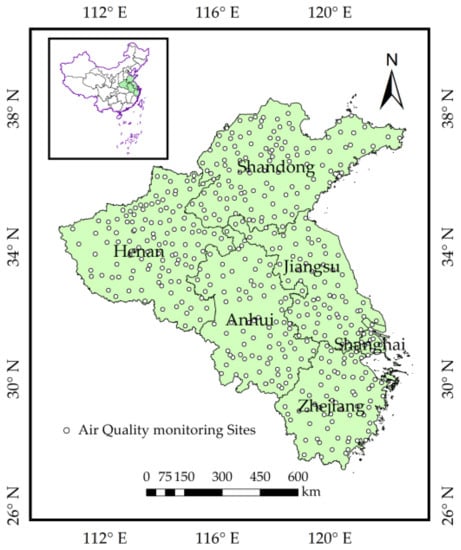
Figure 1
Open AccessArticle
Effects of Elevated Surface Ozone Concentration on Photosynthetic Fluorescence Characteristics and Yield of Soybean Parents and Offspring
Atmosphere 2023, 14(9), 1368; https://doi.org/10.3390/atmos14091368 - 30 Aug 2023
Abstract
Global climate change presents a significant threat to food security. Analyzing the effects of elevated ozone (O3) concentration on photosynthetic fluorescence characteristics and yield addresses the damage of climate change on crops, which would serve food security. With open-top chambers (OTCs)
[...] Read more.
Global climate change presents a significant threat to food security. Analyzing the effects of elevated ozone (O3) concentration on photosynthetic fluorescence characteristics and yield addresses the damage of climate change on crops, which would serve food security. With open-top chambers (OTCs) and Tiefeng-29 soybeans, we investigated the responses of chlorophyll concentration, fluorescence characteristics, net photosynthetic rate (Pn) and yield components to different O3 concentrations, which included CK (ambient concentration approximately 45 nL·L−1, T1 (80 ± 10) nL·L−1 and T2 (120 ± 10) nL·L−1 O3. The parent soybeans (S1) were planted in the current year, and O3 fumigation commenced 20 days after seedling emergence. Aeration was stopped at maturity, and the offspring soybeans (S2) were retained after harvest for further experiments. In the following year, S1 and S2 soybeans were planted, and O3 fumigation began 20 days after seedling emergence. The results show that leaf chlorophyll a (chla) and chlorophyll b (chlb) significantly decreased with longer O3 fumigation time both in parents and offspring, causing damage to the light-trapping ability while the offspring suffered an earlier decrease. The elevated O3 damaged the electron transfer process by significantly reducing the original and actual photochemical efficiencies of PSII both in parents and offspring. The electron transfer rate (ETR) of the parents and offspring decreased, while the difference between them was not significant after O3 treatment. The non-photochemical quenching coefficient (NPQ) showed an increasing trend along time but showed no significant difference between parents and offspring. An elevated concentration of O3 significantly reduced Pn, while the differences in Pn between the parents and the offspring were not significant. Elevated O3 resulted in reduced yields in both parent and offspring soybeans. Although it was found that the offspring soybeans exhibited higher yields than the parents, their reduction in yield was more significant. Therefore, elevated O3 concentration reduced soybean yield through damaging photosynthetic process and electron transfer capacity by impairing energy conversion and material accumulation capacity. The offspring had relatively higher light energy conversion efficiency than the parents, resulting in a higher yield than the parents under all treatments.
Full article
(This article belongs to the Special Issue Impacts of Climate Change and Agro-meteorological Disasters on Crops)
►▼
Show Figures
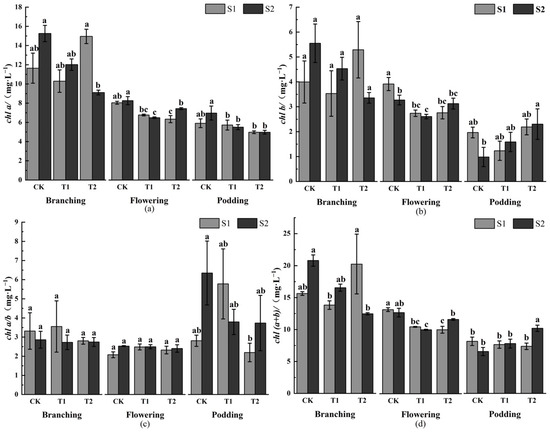
Figure 1
Open AccessArticle
Spatiotemporal Characteristics of Tropical Cyclone Precipitation in Guangdong Province, China, from 1961 to 2020
Atmosphere 2023, 14(9), 1367; https://doi.org/10.3390/atmos14091367 - 30 Aug 2023
Abstract
Tropical cyclones (TCs) are often accompanied by heavy precipitation, which may lead to natural disasters and a serious threat to life and property. However, they also provide indispensable water resources. Studying the temporal and spatial characteristics of TC precipitation is of great importance
[...] Read more.
Tropical cyclones (TCs) are often accompanied by heavy precipitation, which may lead to natural disasters and a serious threat to life and property. However, they also provide indispensable water resources. Studying the temporal and spatial characteristics of TC precipitation is of great importance for TC precipitation forecasting, TC disaster mitigation, and water resource utilization. Guangdong is one of the most frequently and severely TC-affected provinces in China. Due to the different methods used to identify TC precipitation, the conclusions offered by the existing studies are often inconsistent. Moreover, their analyses of the spatiotemporal characteristics of TC precipitation in Guangdong are not sufficiently thorough. In this study, we first selected the historical TCs that affected Guangdong from 1961 to 2020, using an objective separation method for TC wind and rain, based on the observation data from 86 national meteorological stations in Guangdong Province. From these observations covering the past 60 years, the temporal and spatial variations in TC precipitation in Guangdong for four different periods, namely the first rainy season (FRS), the second rainy season (SRS), the non-rainy season (NRS), and over the whole year (WY), were then explored using statistical analysis and multiple cluster methods. The results show that TC frequencies in the four periods all showed a decreasing trend. TC precipitation also showed a decreasing trend in the SRS and NRS, as well as for the WY, but showed a slightly increasing trend in the FRS. Both TC frequency and TC precipitation showed an apparent inter-annual fluctuation and a quasi-periodic pattern. The spatial distribution of TC precipitation in the four periods all showed a decreasing trend from the coastal to the inland stations, but the western coastal areas had higher TC precipitation values than the eastern coastal areas for the SRS, NRS, and WY periods. The spatial variations of TC precipitation in Guangdong in the four periods of the last six decades were quite similar, exhibiting three primary spatial modes and six patterns. Among them, the spatial distribution of TC precipitation being less than normal across the whole province is the most common pattern. The 86 stations can be classified into six groups when using the spatial clustering method and into four groups when using the time-series clustering method. Stations with higher TC precipitation and large inter-annual fluctuations are often distributed in the coastal areas, while stations with less precipitation and small inter-annual fluctuations are distributed in inland areas. However, the primary areas that are affected by TCs may vary in the different periods.
Full article
(This article belongs to the Special Issue Monsoon and Typhoon Precipitation in Asia: Observation and Prediction)
►▼
Show Figures
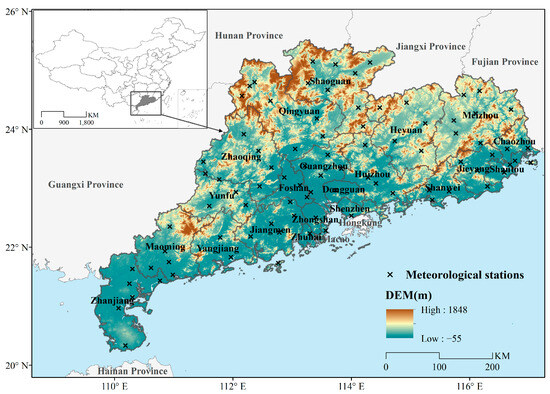
Figure 1
Open AccessArticle
Long-Range Transport Analysis Based on Eastern Atmospheric Circulation and Its Impact on the Dust Event over Moldavia, Romania in August 2022
by
, , , , and
Atmosphere 2023, 14(9), 1366; https://doi.org/10.3390/atmos14091366 - 30 Aug 2023
Abstract
During the second half of August 2022, a dust intrusion event occurred when dust that originated in the dry regions of the Kalmyk steppe (located in Russia, northeast of the Black Sea, north of Georgia, and northwest of the Caspian Sea) and the
[...] Read more.
During the second half of August 2022, a dust intrusion event occurred when dust that originated in the dry regions of the Kalmyk steppe (located in Russia, northeast of the Black Sea, north of Georgia, and northwest of the Caspian Sea) and the Precaspian plain was transported over the eastern region of Romania. The arid soil found in these areas can be attributed to an extended period of intense drought, with notable instances occurring in 2002, 2003, 2015, and 2018. This situation was further intensified by heatwaves experienced in May and June of 2022. The dust event was captured in MODIS images. In addition, smoke trains originating from fires in the north of the Azov were detected, but these did not reach Romania. Optical parameters from AERONET were used to confirm the dust event. To determine the trajectory of the particles, the Hybrid Single-Particle Lagrangian Integrated Trajectory (HYSPLIT) model was used in this paper. The ensemble median model was used to highlight the presence and concentration of dust in the eastern part of Romania. Aerosols were detected between 0 and 4 km, according to radar and ceilometer data from the REXDAN cloud remote sensing facility in Galați, Romania. This dust intrusion event was the result of the dominant easterly circulation caused by the extension of the East European High to the northeast of the continent, which transported the dust towards the eastern part of Romania for more than 2 days. Moreover, the torrential rains between 22 and 24 August did not clear the atmosphere of dust, since the intense easterly circulation kept carrying the dust into the Moldavian area.
Full article
(This article belongs to the Section Aerosols)
►▼
Show Figures
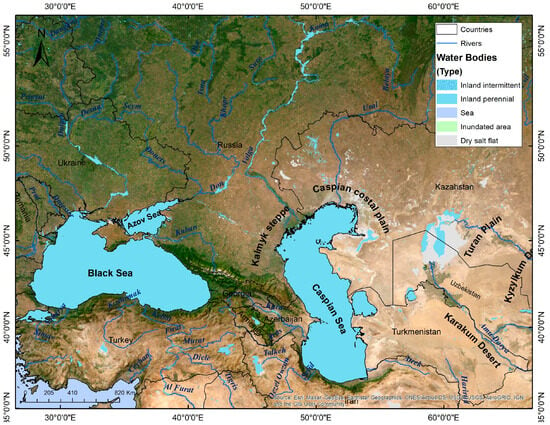
Figure 1
Open AccessArticle
Evaluating the Impact of COVID-19 on the Carbon Footprint of Two Research Projects: A Comparative Analysis
by
, , , , , , and
Atmosphere 2023, 14(9), 1365; https://doi.org/10.3390/atmos14091365 - 30 Aug 2023
Abstract
The objective of this study is to investigate the impact of the COVID-19 pandemic on the carbon footprint (CF) of two research projects. These projects were initiated prior to the onset of the pandemic and subsequently concluded afterward, serving as the Base Case
[...] Read more.
The objective of this study is to investigate the impact of the COVID-19 pandemic on the carbon footprint (CF) of two research projects. These projects were initiated prior to the onset of the pandemic and subsequently concluded afterward, serving as the Base Case (BC) for analysis. Furthermore, the study seeks to explore the potential applicability of measures implemented during the period of lockdown for future mitigation of CF. The applied methodology, which adheres to the guidelines provided by the GHG Protocol and the Department for Environment Food & Rural Affairs (DEFRA) emission factors, is utilized to examine the CF of the projects under two different scenarios. The first scenario assumes that the projects were implemented without the pandemic, while the second scenario considers that the projects were conducted entirely during the pandemic. Among the two projects under review, one emphasizes innovation and entails a collaboration between academia and business. This project is supported by a limited number of employees, exclusively from domestic partners. The other project is more oriented toward policy-making and involves a larger group of partners from Greece and Italy. Its main priority is dissemination. Carbon dioxide (CO2) emissions associated with project activities mainly stem from electricity use, material consumption, project-hosted events, project participation in events, employees commuting, and equipment. Results show that in the first scenario, the projects exhibit a more than 40% increase in CO2 emissions compared to the BC, while in the second scenario, the implementation of measures such as teleworking, virtual participation in events, and digitization of bureaucratic processes lead to a reduction in emissions by at least 20%. The study suggests that adopting such measures after the COVID-19 pandemic could significantly decrease greenhouse gas emissions.
Full article
(This article belongs to the Special Issue Challenges and Advances in the Preparation, Management, and Review of Greenhouse Gases and Air Pollutant Emission Inventories)
►▼
Show Figures
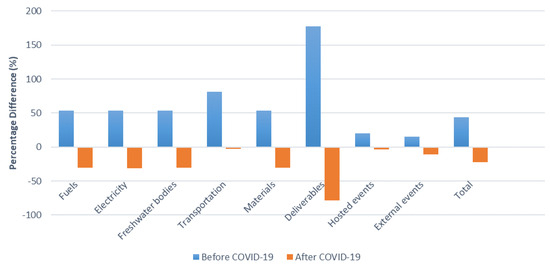
Figure 1
Open AccessArticle
Application of Machine Learning Techniques to Improve Multi-Radar Mosaic Precipitation Estimates in Shanghai
by
, , , , , , , , and
Atmosphere 2023, 14(9), 1364; https://doi.org/10.3390/atmos14091364 - 29 Aug 2023
Abstract
In this study, we applied an explainable machine learning technique based on the LightGBM method, a category of gradient boosting decision tree algorithm, to conduct a quantitative radar precipitation estimation and move to understand the underlying reasons for excellent estimations. By introducing 3D
[...] Read more.
In this study, we applied an explainable machine learning technique based on the LightGBM method, a category of gradient boosting decision tree algorithm, to conduct a quantitative radar precipitation estimation and move to understand the underlying reasons for excellent estimations. By introducing 3D grid radar reflectivity data into the LightGBM algorithm, we constructed three LightGBM models, including 2D and 3D LightGBM models. Ten groups of experiments were carried out to compare the performances of the LightGBM models with traditional Z–R relationship methods. To further assess the performances of the LightGBM models, rainfall events with 11,483 total samples during August-September of 2022 were used for statistical analysis, and two heavy rainfall events were specifically chosen for the spatial distribution evaluation. The results from both the statistical analysis and spatial distribution demonstrate that the performance of the LightGBM 3D model with nine points is the best method for quantitative precipitation estimation in this study. Through analyzing the explainability of the LightGBM models from Shapley additive explanations (SHAP) regression values, it can be inferred that the superior performance of the LightGBM 3D model is mainly attributed to its consideration of the rain gauge station attributes, diurnal variation characteristics, and the influence of spatial offset.
Full article
(This article belongs to the Special Issue Improving Extreme Precipitation Simulation)
►▼
Show Figures

Figure 1
Open AccessArticle
Analysis of Water Vapor Transport and Trigger Mechanisms for Severe Rainstorms Associated with a Northeast China Cold Vortex in 2022
Atmosphere 2023, 14(9), 1363; https://doi.org/10.3390/atmos14091363 - 29 Aug 2023
Abstract
Rainstorms always occur in the southeast and northeast quadrants of the Northeast China Cold Vortex (NCCV), resulting in significant flooding. This study investigated water vapor and trigger mechanisms for rainstorms within these two regions of an NCCV event during 11–14 June 2022 in
[...] Read more.
Rainstorms always occur in the southeast and northeast quadrants of the Northeast China Cold Vortex (NCCV), resulting in significant flooding. This study investigated water vapor and trigger mechanisms for rainstorms within these two regions of an NCCV event during 11–14 June 2022 in terms of Lagrangian backward tracking, stratification stability, and upward motion using the ERA5 reanalysis. In the mid-troposphere, a quasi-stationary “ridge-NCCV-ridge” pattern resided over northeastern China, with an “anticyclonic-cyclonic-anticyclonic” airflow in the lower troposphere. As a result, water vapor originated from the Yellow Sea and was transported in an “L” shape toward both two regions. The southeast region was influenced by southwesterly and northwesterly airflows, resulting in the convergence of moist air from the Yangtze River and Lake Baikal and significant vertical shear of positive vorticity advection. This dynamic created deep and pronounced upward currents in the southeast of the NCCV, leading to the development of intensive and extensive rainstorms in situ. In contrast, the northeast region of the NCCV was dominated by southerly airflow. The moist air converged against the lee side of the Great Khingan Mountains and generated shallow, unstable stratification. The upward motion in this area was relatively weaker and thus induced regional rainstorms.
Full article
(This article belongs to the Special Issue Climate Extremes in China)
►▼
Show Figures
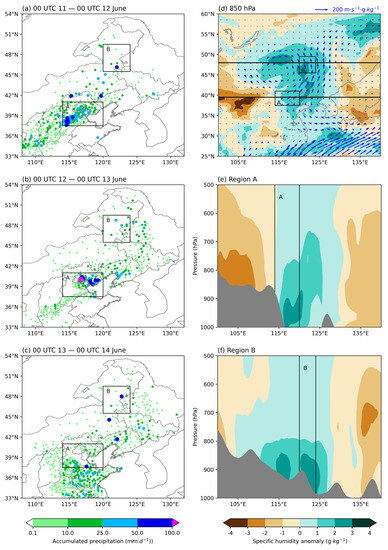
Figure 1

Journal Menu
► ▼ Journal Menu-
- Atmosphere Home
- Aims & Scope
- Editorial Board
- Reviewer Board
- Topical Advisory Panel
- Instructions for Authors
- Special Issues
- Topics
- Sections & Collections
- Article Processing Charge
- Indexing & Archiving
- Editor’s Choice Articles
- Most Cited & Viewed
- Journal Statistics
- Journal History
- Journal Awards
- Society Collaborations
- Conferences
- Editorial Office
Journal Browser
► ▼ Journal BrowserHighly Accessed Articles
Latest Books
E-Mail Alert
News
Topics
Topic in
Atmosphere, Climate, Land, Remote Sensing, Sensors
Progress in Satellite Remote Sensing of Land Surface: New Algorithms, Sensors, and Datasets
Topic Editors: Shengli Wu, Lingmei Jiang, Jinyang Du, Kebiao Mao, Tianjie ZhaoDeadline: 30 December 2023
Topic in
Atmosphere, Land, Remote Sensing, Sustainability, Water
Hydrosphere under the Driving of Human Activity and Climate Change: Status, Evolution and Strategies
Topic Editors: Yong Xiao, Jianping Wang, Jinlong ZhouDeadline: 31 December 2023
Topic in
Atmosphere, Energies, JMSE, Sustainability, Wind
Wind, Wave and Tidal Energy Technologies in China
Topic Editors: Wei Shi, Qihu Sheng, Fengmei Jing, Dahai Zhang, Puyang ZhangDeadline: 31 January 2024
Topic in
Atmosphere, Hydrology, Remote Sensing, Sustainability, Water
Hydrology and Water Resources Management
Topic Editors: Genxu Wang, Hongwei Lu, Lei Wang, Bahman NaserDeadline: 30 March 2024

Conferences
Special Issues
Special Issue in
Atmosphere
Structure and Dynamics of Mesosphere and Lower Thermosphere
Guest Editors: Shengyang Gu, Kaiming Huang, Chengyun YangDeadline: 6 September 2023
Special Issue in
Atmosphere
Waves and Variability in Terrestrial and Planetary Atmospheres
Guest Editors: Erdal Yiğit, Alexander Medvedev, Shuanggen Jin, Ed Thiemann, Jun CuiDeadline: 23 September 2023
Special Issue in
Atmosphere
Aerosol–Light Interactions; Radiative Absorption and Emission by Particles of Atmosphere
Guest Editors: Sonia Castillo Fernández, Carlos Blanco-AlegreDeadline: 30 September 2023
Special Issue in
Atmosphere
Urban Thermal Environment Evolution, Theoretical Analysis and Strategies for Mitigations and Adaption
Guest Editors: Nana Li, Hua Wu, Qian Cao, Fei Meng, Xiaoma LiDeadline: 13 October 2023
Topical Collections
Topical Collection in
Atmosphere
Measurement of Exposure to Air Pollution
Collection Editor: Luca Stabile
Topical Collection in
Atmosphere
Livestock Odor Issues and Air Quality
Collection Editor: Jacek Koziel
Topical Collection in
Atmosphere
Indoor Air Quality: From Sampling to Risk Assessment in the Light of New Legislations
Collection Editors: Pasquale Avino, Gaetano Settimo











